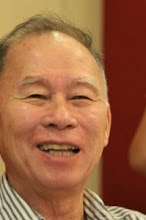A conference given by Horacio de la Costa S.J. to the Sisters of the Generalate Communities, 1974, Typrwritten, 5 pp., AdM Archives
You asked me to say something about the role of religious women in Asia today. If you will pardon my saying so, I don’t think that’s a question you should ask a man. Especially not during International Women’s Year. You shouldn’t ask us men what your role is – you should tell us.
But you asked, so you must take the consequences. The first consequence is that you will rephrase the question. Instead of asking myself what the role of religious women in Asia today, I will ask myself what the role of the Religious of the Virgin Mary is in the Philippines today.
The first thing I notice about you is that you are the only religious congregation of women in the Philippines founded by a Filipina. I don’t know of any others. If there are, I humbly beg their pardon, and I say to them that what I say to you applies to them also. It seems to me that since you are a Filipino religious congregation in this special way, not only by your membership but by your very origins, you have a special mission: the mission of showing the world that there can be, that there is, an authentically Filipino way of living a authentically religious life. If you do this, you will be making a valuable contribution to what the 1974 Synod of Bishops considered to be one of the principal tasks of evangelization in the world today. What is that task? It is the task of making the Gospel incarnate in the particular cultures of the different peoples that make up the world, by building up local churches capable of making, each one of them, its own unique contribution to the rich variety of the one universal church.
Now, I suppose that religious women, before they are religious, are women. Your first task, therefore, is not to do anything, but simply to be something: to be Filipinas: to be women in the Filipino tradition of womanhood; to preserve and to enhance what is most valuable and most lovable in that tradition. And what is that tradition? Let’s take a look at that for a moment.
You know of course that there is a strong movement in the Western world for the liberation of women – “Women’s Lib.” Filipino men who have been more or less westernized tend either to sympathize with Women’s Lib, or to oppose it, or to laugh at it. But Filipino men whose acquaintance with contemporary Western culture is but slight tend to be simply puzzled by Women’s Lib. “Women’s Lib? What’s all this? What have women got to be liberated from, for heaven’s sake? It’s men who have to be liberated, not women!”
An exaggeration, no doubt. But with a kernel of truth. For our Filipino cultural tradition, as far back as it goes, even before the coming of Christianity, gives to women a place in society higher than any cultural tradition in Asia, or for that matter in the West. This is one of the very first things the first Europeans to come to the Philippines noticed about us. They noticed, with certain amount of wonder, that among the pre-Spanish Filipino women were persons, not things. They could, for instance, own property in their own right, even after marriage. And in the marriage settlement itself, our custom was the reverse of European custom. In our marriage settlement, the bride’s family did not accompany the bride with a dowry. On the contrary, the groom’s family; or the groom himself, was obliged to give something for the bride, whether goods or services, a “bride price.” You see what the theory behind this was. It was that the bride is something, someone of value; someone dear, someone her family would like to keep, and for the the loss of whom they had to be compensated in some way.



